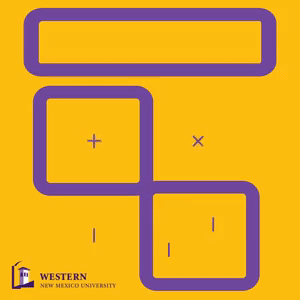At the Friday Legislative Forum, hosted by Prospectors, various community groups presented their progress and their needs to the three legislators from the area Rep. Rodolpho "Rudy" Martinez, Rep. Dianne Hamilton and Sen. Howie Morales.
Mayor James Marshall and Town Manager Alex Brown represented the town of Silver City.
Marshall said the town is very healthy and for more than six years has had clean audits.
"Our gross receipts taxes are up 9.5 percent, back to 2007 levels," Marshall reported. "This allows us to do innovative things. With lodgers' tax up 21.4 percent from last year, it will allow us to do advertising to keep our hotels full."
The town of Silver City just issued $5 million in bond debt to do quality-of-life projects.
The town also refinanced $1.2 million bond debt to take advantage of lower interest rates.
"Within six years, the town will have no outstanding debt, except for the $5 million we just issued," Marshall said. "We went out this year and got our own bond rating. We have an A-plus rating with Standard and Poors. Because of our lack of control of local revenues, S&P had confidence that we could control expenditures, but were concerned about the revenues side of the picture, especially when it comes to gross receipts.
"It boils down to hold harmless," he continued. "The state has control of our funding. This is the biggest harm to local communities being independent. Putting New Mexico construction loans toward local control is critical to our success. We have to step up and find our own projects."
Out of the town's own funding, it is paying to improve the Scott Park Sports Complex and club house, putting a new roof on the Parks Maintenance building, paid for a downtown master plan acquisition of property, replaced the Gabby Hayes Well, and is using local and state funding to do swimming pool improvements, Recreation Center upgrades, and will use state funding for sewer line extensions. Development of the plan for a regional water system has relied on local funding.
Martinez said Silver City has made significant steps toward self-sufficiency and "is certainly a model for other communities." He asked about the regional water system.
Brown explained that Hurley has asked for $13 million for a transmission line to carry water from the Silver City well field near the Grant County Airport to Hurley.
"I met with the (U.S. Department of Agriculture Rural Utilities Division to explain the regional water system," Brown said. "The town is going to put its 93 acre-feet of water rights toward Hurley and then continue the water to Santa Clara. I got them excited to finalize it. All funding for this project will require a match. The value of the water rights can go toward the match. The $230,000 we spent on the plan and model of the region can go to the match. We have asked for $2.5 million from the Arizona Water Settlements Act, and it could be a match. I think we can do it within four years through the RUS, if we go through the Grant County Water Commission."
He said if the town succeeded in getting all the matches, nothing should have to come out of the small communities' pockets.
"The water will flow from Silver City to the airport and would be back up water supplies for the communities, as well as economic development for the entire county," Brown said.
Martinez asked if there had been any consideration of costs to the small communities, which may have to raise rates.
"If we can use our water rights value and our $230,000 for the plan and design, that would be a match for funding, so there should be no need for a loan, and a loan only if we need to pump it," Brown answered. "Or if an economic development entity needed it, but that would be offset by additional revenues."
Martinez asked if the reuse of effluent could be a match.
"Yes, part of the in-kind match is our reuse of effluent," Brown said. "The treated effluent from the wastewater plant goes into Silva Creek for water credits."
Hamilton asked if the town has plenty of landfill space.
"We've had issues," Brown said. "We are building two cells. With the problems, we have to put more money in because the water table is rising at the landfill, so we have to raise current cells. We will have a return in additional space. The landfill has a 25-year current life, because of recycling."
"Recycling is good," Hamilton said. "I remember as a child during World War II, my mom recycled everything.
"What about the memorandum of understanding among the counties and municipalities that Anthony (Gutierrez) mentioned?" she asked.
Marshall said the agreement among the municipalities and the four counties in the area is "based on economies of scale. We have to regionalize because we're not competitive otherwise with communities that have a population of 60,000. We've recently been coming together, so we don't compete with each other. We can build each other up, instead of tearing each other down."
Morales said he didn't feel he could support taking hold harmless away, because, in that case, the state will have to help the communities.
When the food tax was repealed, it was a huge revenue loss to communities.
"The discussion is to move to little-by-little take hold harmless payments away," Morales said. "There are no revenues coming in, so we can't give anything out. I think we have to work together, but it's very much on the table this year. Maybe it will be a phase-in at 10 percent a year. Municipalities can't afford taking the entire hit in one year."
He said there is confusion on the GRT.
Brown said Silver City does not have as much construction in the town, as in the county. He said there are different categories of gross receipts taxes. The main use of GRT is for police, fire fighting, streets, parks, and the library.
"Not everybody does construction," Brown said. "Some people offer and use services. The one source of revenue the state took away. It was stable, because everybody eats.
"The arguments about hurting lower-income people is not valid," Brown said. "Food stamps were never taxed.
"It is one of our main objections with the Municipal League," he continued. "We need to educate the legislators about why this is so important to communities and why we need it."
He said the city could raise taxes by the Council "tomorrow," and the county has the property tax.
"But we don't want to raise taxes right now," Brown said. "Why raise them unless you really need them? The Legislature doesn't look at the big picture. It's not the little pieces and how they affect things."
"I appreciate that," Morales said. "We have the responsibility of the state agencies, but we don't have the ability to raise taxes. The difference with hold harmless is that we did it to ourselves. There's got to be a way to work through it. It's a balancing act."
He also asked about the 1 percent for art that is returned by the state on construction projects.
"Yes, we get it, if it is legislatively funded," Brown said. "Almost always we have a loss and have to put in our own dollars to finish projects. We always plan for contingencies to complete projects or it's out of our own money that we do the planning and design. Most of the time it comes out of our own pockets."
"I want to carry a bill to put 1 percent to communities to support extra expenses," Morales said.
"That's something to think about," Brown said. "You're giving us money to do projects; we are sending the gross receipts to the state; and some comes back to us."
"We've talked about doing that, but it makes communities vulnerable. The 7 percent is always paid," Morales said. "I suggest we give 1 percent back to the community."
The next article will cover Bayard's presentation.








